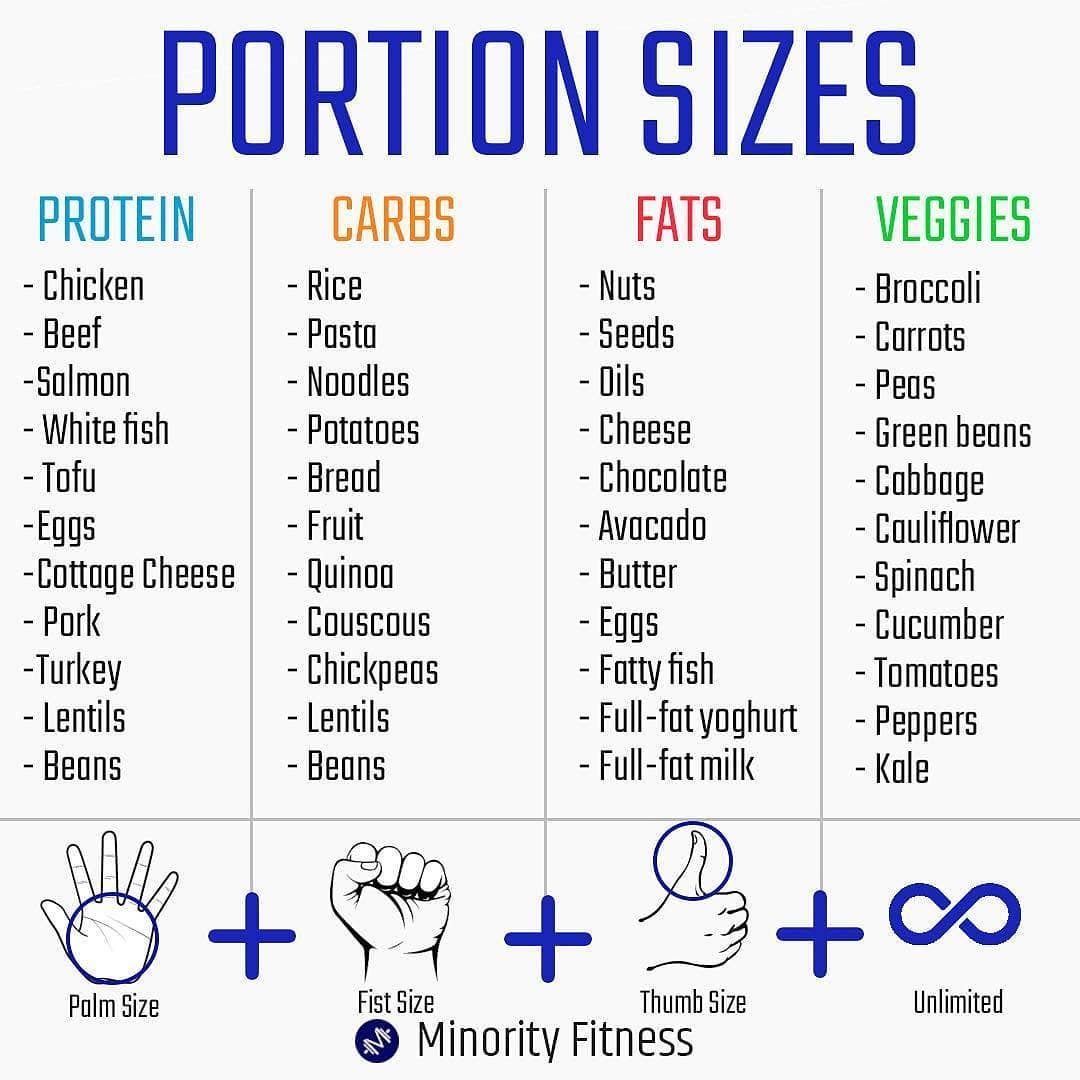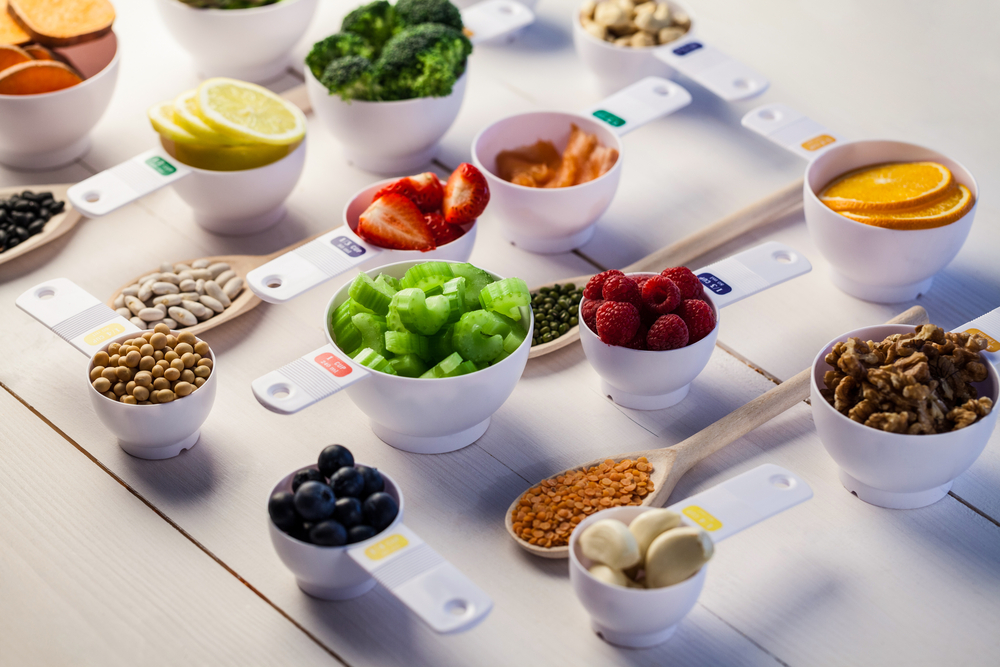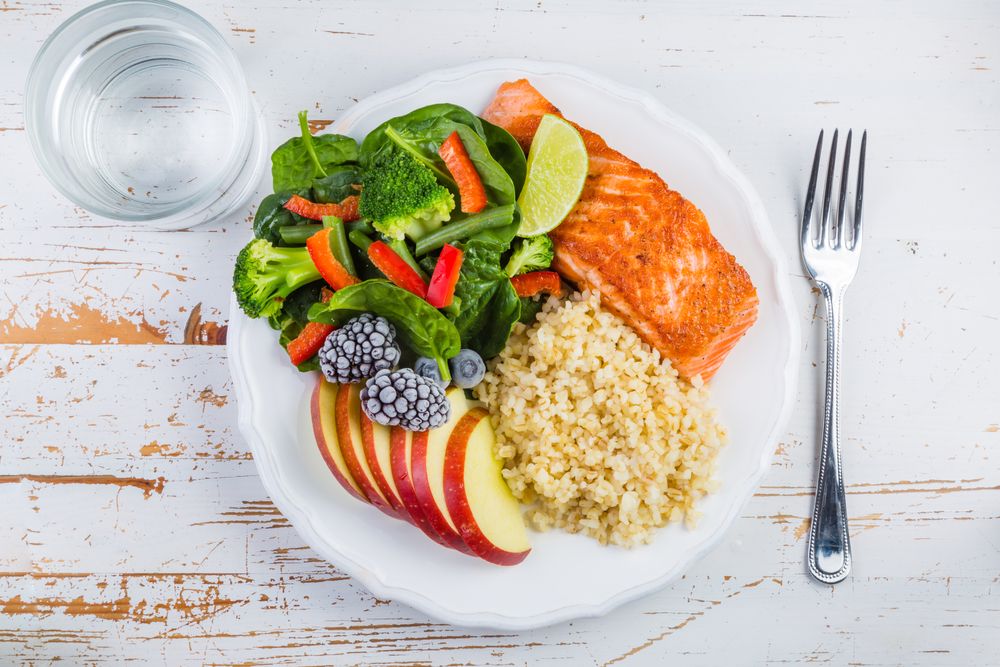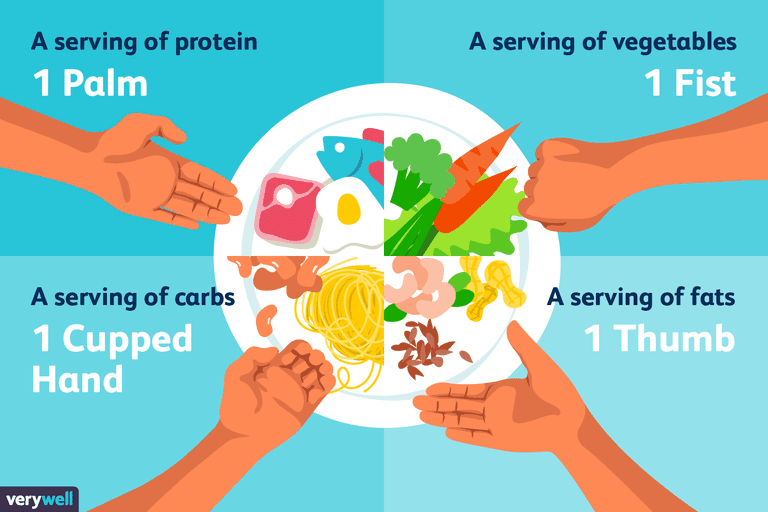Mastering how to portion meals correctly is a fundamental step toward achieving your health and wellness goals. Proper meal portioning not only helps in managing weight but also ensures a balanced intake of essential nutrients, making your dietary efforts more effective and sustainable. Whether you aim for weight loss, muscle gain, or maintenance, understanding the nuances of portion control can transform your approach to eating.
This comprehensive guide explores key principles, practical techniques, and tools to help you accurately portion your meals. It covers visual cues, measurement methods, meal planning strategies, and adjustments for various dietary needs. By incorporating these insights, you can develop consistent habits that support your lifestyle and health objectives.
Understanding the Importance of Proper Meal Portioning

Proper meal portioning plays a vital role in maintaining overall health and supporting wellness goals. It is a foundational aspect of a balanced diet, ensuring that the body receives appropriate nutrients without excess calories that can lead to weight gain or nutritional deficiencies. Consistently practicing correct portion control not only helps in managing weight but also contributes to better digestion, improved energy levels, and reduced risk of chronic diseases such as diabetes, cardiovascular conditions, and hypertension.
Recent studies reinforce the significance of portion control in health management. According to research published in the Journal of Nutrition, individuals who practiced mindful portioning had a 25% lower risk of overeating and gained less weight over a five-year period compared to those who ignored portion sizes. Furthermore, the Centers for Disease Control and Prevention (CDC) reports that nearly 70% of adults in the United States are overweight or obese, often due to consuming portions larger than recommended.
Accurate portioning helps prevent overeating and promotes longevity and overall well-being.
Common Mistakes Made When Portioning Meals
Even with good intentions, many individuals fall into habitual errors that compromise the effectiveness of portion control. Understanding these mistakes is crucial to avoid unintended overeating and to foster healthier eating patterns.
One prevalent mistake is estimating portions by eye without using measuring tools, which often results in serving sizes exceeding recommended guidelines. For example, serving a standard portion of cooked pasta as a cup can be inaccurate when visualized without measurement, leading to 50% more intake than intended. Another common error is misjudging the size of containers or plates; using large plates can subconsciously encourage larger servings, a phenomenon known as the “plate size effect.”
Additionally, some individuals tend to skip meals or inadvertently eat larger portions later in the day, disrupting their hunger cues and leading to overeating. Consuming highly processed foods with hidden calories is another mistake, as these products often contain excessive fats, sugars, or sodium, which can quickly inflate portion sizes and caloric intake without providing adequate nutrition.
Understanding these common pitfalls allows for better planning and adherence to proper portioning strategies, ultimately supporting healthier eating habits and long-term wellness goals.
Key Principles of Correct Meal Portioning
Effective meal portioning is fundamental to maintaining a balanced diet and achieving nutritional goals. It involves understanding how to divide food groups appropriately to ensure adequate intake of essential nutrients while preventing overeating. By adhering to core principles, individuals can develop sustainable eating habits that support overall health and well-being.
Proper portioning not only helps regulate calorie intake but also promotes a balanced distribution of macronutrients—carbohydrates, proteins, and fats—within each meal. Implementing these principles requires awareness of portion sizes, food group proportions, and meal composition, which collectively contribute to a healthy and enjoyable eating experience.
Fundamental Rules for Dividing Meals Effectively
To portion meals correctly, several foundational rules should be followed. These rules serve as guidelines to create balanced and nutritious plates that meet individual dietary needs. Consistency in applying these principles assists in developing a sustainable approach to portion control.
- Prioritize Food Group Balance: Ensure each meal includes appropriate proportions of vegetables, proteins, grains, and healthy fats to cover all essential nutrient requirements.
- Use Visual Cues: Employ visual indicators such as the Plate Method, where half the plate is vegetables, a quarter is lean proteins, and a quarter is whole grains, to intuitively manage portions.
- Mind Portion Sizes: Be aware of standard serving sizes—such as 3-4 ounces of cooked meat or a cup of cooked grains—and adjust according to individual caloric needs.
- Control Energy Density: Choose foods that are nutrient-dense rather than calorie-dense to maximize nutritional intake without excessive calorie consumption.
- Maintain Consistency: Regularly use measuring tools or visual guides to maintain portion accuracy, especially when planning meals for specific health goals.
Methods to Balance Macronutrients within a Plate
Achieving a balanced plate involves distributing macronutrients in proportions that support energy levels, metabolic functions, and overall health. Different approaches can be adopted depending on dietary preferences, health conditions, and activity levels. The following methods facilitate effective macronutrient balancing.
| Approach | Description | Example | Suitable For |
|---|---|---|---|
| Plate Method | Dividing the plate into sections to visually balance food groups | Half vegetables, one quarter lean protein, one quarter whole grains | General healthy eating, weight management |
| Macronutrient Ratio | Specifying percentages of calories from carbs, proteins, and fats | 50% carbs, 25% protein, 25% fats | Diet plans with specific macronutrient targets |
| Portion-Based Approach | Using fixed portion sizes for each macronutrient | 3 oz of protein, 1 cup of grains, 2 cups of vegetables | Meal planning for athletes or specific health conditions |
| Food Group Emphasis | Focusing on balancing different food groups rather than exact ratios | Ensuring each meal contains a variety of food groups in appropriate amounts | General balanced diet, flexibility in food choices |
How to Use Visual Cues and Hand Measurements for Portion Control

Effective portion control is essential for maintaining balanced nutrition and managing calorie intake. Utilizing visual cues and hand measurements provides a simple, accessible method to estimate serving sizes without the need for specialized kitchen tools. This approach helps individuals develop a better intuitive understanding of appropriate portions, fostering healthier eating habits in everyday life.
By understanding and applying these methods, individuals can easily regulate their food intake, avoid overeating, and achieve their dietary goals. Hand measurements, in particular, serve as a practical guide that correlates with body size and can be consistently used across various meals and food types, making portion control both manageable and personalized.
Using Hand Sizes as Guides for Portioning Different Food Groups
Hand measurements are an effective way to estimate portion sizes because they are naturally adjusted to the individual’s body size, providing a personalized reference point. Different food groups can be portioned using specific parts of the hand, ensuring consistency and simplicity during meal preparation and eating.
- Protein foods: A palm-sized portion (excluding fingers) is typically enough for most adults. This generally equals about 3-4 ounces of cooked lean meat, poultry, or fish, which aligns with dietary recommendations for a standard serving.
- Carbohydrates: A cupped hand can be used to measure carbohydrate-rich foods like rice, pasta, or grains. For most people, this equates to roughly 1/2 to 1 cup of cooked grains.
- Fruits and vegetables: A fist-sized portion (the size of the entire hand excluding fingers) is suitable for fruits and vegetables, amounting to approximately 1 cup, which supports the daily intake of these essential food groups.
- Fats and oils: The tip of the thumb, about 1-2 teaspoons, is an ideal measure for fats like butter, oils, or spreads. This helps in moderation, considering fats are calorie-dense.
Step-by-Step Guide to Estimating Portions Without Tools
Estimating portion sizes without measuring tools relies on visual judgment and familiarity with hand measurements. Here is a simple step-by-step process to develop this skill:
- Familiarize yourself with hand measurements: Practice using your hand to measure different foods regularly to build a mental map of approximate sizes.
- Identify standard reference points: Use the palm for proteins, the cupped hand for grains, the fist for fruits and vegetables, and the thumb tip for fats.
- Compare with actual servings: During meals, compare your servings with your hand estimates. Over time, this will improve accuracy and confidence.
- Adjust based on individual needs: Recognize that portion sizes may need adjustment based on age, activity level, and specific dietary goals. Use your hand measurements as a flexible guideline rather than a strict rule.
Practicing these steps consistently will enhance your ability to gauge portion sizes intuitively, making healthy eating more accessible and less dependent on measuring devices.
Visual Cues for Identifying Correct Portions During Meal Preparation
In addition to hand measurements, various visual cues can assist in maintaining appropriate portion sizes during meal prep. Recognizing these cues ensures that meals are balanced and aligned with dietary recommendations.
- Plate division: Use the “plate method” where half the plate is dedicated to vegetables and fruits, one-quarter to lean proteins, and one-quarter to grains or starchy vegetables. This visual division promotes balanced meals.
- Food appearance: Foods that are appropriately portioned often have a specific visual fullness without overflowing or appearing sparse. For example, a serving of pasta should fill approximately half of a standard dinner plate without spilling over.
- Color contrast: Bright, colorful vegetables and fruits in proportion to other food groups can indicate balanced portions, as they typically occupy a significant visual space on the plate, guiding portion size estimation.
- Container sizes: Using standard-sized containers (e.g., a standard cup or bowl) can help ensure portions align with recommended serving sizes, especially when preparing meals in advance for multiple servings.
- Visual markers on packaging: Many food packages include serving size indicators, which can serve as a visual cue for portioning, especially when combined with hand measurement techniques.
“Consistent use of visual cues and hand measurements fosters an intuitive understanding of appropriate portions, leading to healthier eating habits and better portion control.”
Techniques and Tools for Accurate Meal Portioning
Achieving precise meal portions is essential for maintaining balanced diets, controlling calorie intake, and ensuring consistency across servings. Using the right tools and techniques enhances accuracy, making portioning more reliable whether at home or in professional settings. Proper training in these methods ensures each meal is served with consistency and nutritional integrity, fostering healthier habits and efficient meal management.
Employing a variety of portioning tools, understanding their proper use, and adhering to best practices for maintenance are key elements in accurate meal preparation. These tools not only facilitate precision but also streamline the process, saving time and reducing food waste. Below, we explore some of the most effective tools and procedures for achieving consistent and accurate meal portions.
Utilization of Portion Scoops, Food Scales, and Container Sets
Different tools serve specific purposes in portion control, each suited to various types of foods and serving contexts. Selecting the appropriate tool enhances accuracy and ease of use, particularly when preparing multiple servings or managing dietary requirements.
| Tool | Purpose | Benefits |
|---|---|---|
| Portion Scoops | Pre-measured servings of foods like ice cream, batter, or soups | Quick, consistent, and hygienic portioning; ideal for foods with similar densities |
| Food Scales | Measuring raw or cooked ingredients by weight | High precision, suitable for complex recipes, dietary tracking, and portioning bulk foods |
| Container Sets with Measurement Markings | Storing and portioning meals or ingredients | Ensures uniformity in storage, easy visual verification, and aid in portion size consistency |
Procedures for Accurate Measurement
Correct use of tools involves specific procedures that uphold measurement accuracy. Proper technique minimizes errors and guarantees each portion aligns with intended nutritional goals. Mastery of these procedures is vital for professionals and home cooks seeking consistency.
- Ensure tools are clean and calibrated before use to avoid contamination and measurement errors.
- For food scales, place the container or plate on the scale, zero or tare it, then add the ingredient until the desired weight is achieved. Use the tare function repeatedly when measuring multiple ingredients in the same container.
- When using portion scoops, fill the scoop level with the food and scrape off excess to ensure uniformity. Use the same scoop size for all servings to maintain consistency.
- For container sets, portion ingredients based on measurement markings, and double-check that containers are filled to the designated line.
- Maintain steady and level placement of tools during measurement to prevent inaccuracies caused by tilting or uneven surfaces.
Best Practices for Maintaining Consistency
Consistency in portion sizes relies on disciplined practices and routine calibration of tools. Regular maintenance, proper storage, and standard operating procedures help sustain accuracy over time, especially in busy environments where multiple users are involved.
- Regularly calibrate food scales to ensure continued precision, especially when moving or after extended use.
- Use dedicated tools for specific foods to prevent cross-contamination and preserve accuracy.
- Keep tools clean and dry after each use to prevent buildup or corrosion that could affect measurements.
- Train all personnel or household members on proper measuring techniques and encourage adherence to standardized procedures.
- Establish standard portion sizes for meals and snacks, and consistently use the same tools and methods to serve them.
Practical Meal Planning Strategies for Correct Portioning

Effective meal planning plays a vital role in maintaining balanced nutrition and controlling portion sizes. By adopting strategic approaches to meal preparation, individuals can ensure they serve appropriate portions, avoid overeating, and support their health goals. Proper planning involves selecting nutrient-dense ingredients, organizing meals ahead of time, and utilizing tools that facilitate consistent portion control.
Implementing practical strategies during meal planning and prep can simplify portioning, reduce decision fatigue, and promote healthier eating habits. Utilizing structured templates and pre-portioned ingredients enables efficiency and consistency, especially for those managing specific dietary needs or aiming for weight management.
Utilizing Meal Prep Templates and Organized Structures
Creating or adopting meal prep templates with clear portions helps streamline the process of organizing meals and ensures accuracy in serving sizes. These templates serve as visual guides or checklists, reducing guesswork and fostering consistency across all meals. Structured approaches also facilitate grocery shopping, reducing waste and ensuring ingredients are used efficiently.
| Meal Component | Portion Size | Preparation Notes |
|---|---|---|
| Protein | 3-4 oz (85-113 grams) | Pre-portioned into containers or measured during meal assembly |
| Vegetables | 1 cup (about 90 grams) | Cut and stored in meal prep containers for easy access |
| Carbohydrates | 1/2 cup (about 75 grams) | Cooked and divided into individual servings |
| Fats | 1-2 teaspoons (5-10 grams) | Measured during preparing dressings or added as toppings |
Using such templates allows for consistent portion sizes across multiple meals and simplifies the process of shopping, cooking, and serving. It also serves as a visual assurance that nutritional goals are maintained throughout the week.
Sample Meal Plans with Correctly Portioned Servings
Here’s an example of daily meal plans designed with proper portioning, reflecting balanced intake aligned with dietary guidelines:
Breakfast
Oatmeal cooked with 1/2 cup rolled oats, topped with 1 tablespoon chopped nuts, and a medium-sized fruit (such as an apple or banana). Add a cup of low-fat milk or dairy alternative.
Snack
A small handful of unsalted almonds (about 1 ounce or 23 almonds) paired with a medium-sized piece of fruit.
Lunch
Grilled chicken breast (about 4 oz), 1 cup of steamed broccoli, 1/2 cup of cooked brown rice, and a tablespoon of olive oil-based dressing.
Snack
Yogurt (6 oz) with a tablespoon of honey and a handful of berries.
Dinner
baked salmon (about 4 oz), 1 cup roasted vegetables, and 1/2 cup quinoa or sweet potato.
Adjustments can be made based on individual caloric and nutritional needs, but the key principle remains consistent: serve each meal with appropriately measured portions that align with dietary goals. Planning meals ahead using these strategies minimizes the risk of over-serving and promotes healthier eating habits over time.
Incorporating Portion Control into Different Diets and Lifestyle Goals
Maintaining appropriate portion sizes is essential for achieving various health objectives, whether aiming for weight loss, muscle gain, or maintaining current health status. Tailoring portioning strategies to align with specific dietary goals not only enhances effectiveness but also promotes sustainable habits. Understanding how to adjust portion sizes based on individual activity levels and nutritional needs is key to optimizing health outcomes and ensuring that dietary practices support overall well-being.
Common Challenges and Solutions in Portioning Meals Correctly

Proper meal portioning is essential for achieving health goals, maintaining balanced nutrition, and preventing overeating. However, many individuals encounter various obstacles that make consistent and accurate portion control difficult. Recognizing these challenges and implementing effective solutions can significantly improve one’s ability to stick to desired portion sizes and foster healthier eating habits over time.While the principles of correct portioning are straightforward, real-life circumstances often introduce complexities.
Factors such as emotional eating, habitual behaviors, busy lifestyles, and environmental cues can interfere with maintaining proper portions. Overcoming these hurdles requires a combination of awareness, practical techniques, and ongoing adjustments to develop sustainable habits that align with personal health goals.
Common Obstacles in Meal Portioning and Practical Solutions
Understanding the typical challenges faced during portion control enables individuals to develop targeted strategies to overcome them effectively. Below are the most prevalent obstacles along with proven solutions:
Many people struggle with portioning due to emotional or habitual tendencies that trigger overeating, environmental distractions, or difficulty in re-evaluating their needs over time. Addressing these issues involves deliberate planning and adaptable practices.
- Emotional and Habitual Overeating: Emotional states such as stress, boredom, or sadness often lead to mindless eating, disregarding appropriate portion sizes. Habitual behaviors, like eating large servings out of habit rather than hunger, compound this challenge.
- Environmental Cues and Distractions: External factors like large dinner plates, buffet settings, or watching TV while eating can encourage larger portions and decreased awareness of intake.
- Lack of Flexibility in Meal Planning: Rigid portioning without room for adjustments can cause frustration, leading to overeating when plans are disrupted or feelings of deprivation.
Techniques to Overcome Emotional and Habitual Overeating
Addressing emotional and habitual overeating involves developing awareness and implementing strategies to foster mindful eating.
Mindful eating encourages paying full attention to the sensory experience of eating, recognizing true hunger cues, and distinguishing emotional eating from physical hunger.
- Identify Emotional Triggers: Keep a journal to track emotional states and eating patterns. Recognizing common triggers enables proactive management, such as engaging in alternative activities or practicing stress-reduction techniques instead of eating.
- Develop Alternative Coping Strategies: Incorporate activities like walking, meditation, or calling a friend when cravings arise from emotional triggers, which can reduce the reliance on food as a comfort mechanism.
- Practice Mindful Eating: Slow down during meals, savor each bite, and pay attention to hunger and fullness signals. This practice helps prevent overeating caused by distraction or emotional states.
- Establish Routine and Consistency: Create regular meal times and portions to minimize impulsive eating and reinforce healthy habits over time.
Procedures for Re-evaluating and Adjusting Meal Portions
Regular assessment of one’s portioning practices ensures they remain aligned with evolving health goals and lifestyle changes.
As individuals progress in their health journey, their nutritional needs and activity levels may change. Re-evaluating and adjusting portions periodically helps sustain progress and prevent plateaus or setbacks.
- Monitor and Record Intake: Keep a food diary or use digital apps to track portion sizes and overall intake. This data provides insights into patterns and areas needing adjustment.
- Assess Body Response and Energy Levels: Pay attention to how your body responds to current portions, noting any feelings of hunger, fullness, or fatigue. These cues guide necessary modifications.
- Consult Nutrition Professionals: Regular check-ins with dietitians or nutritionists can provide personalized recommendations and help refine portion strategies based on current health status and goals.
- Adjust Based on Lifestyle Changes: Modifications such as increased physical activity or changes in work schedule may necessitate re-calibrating meal sizes to maintain balance and energy levels.
By proactively addressing these common challenges through awareness, behavioral modifications, and ongoing adjustments, individuals can enhance their ability to maintain correct and sustainable meal portions, ultimately supporting their health and well-being.
Ultimate Conclusion
Incorporating proper meal portioning into your daily routine is a powerful step toward better health and well-being. By understanding fundamental principles, utilizing effective tools, and tailoring strategies to your goals, you can achieve a sustainable and enjoyable approach to eating. Remember, consistency and mindful adjustments are key to long-term success in your dietary journey.